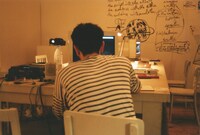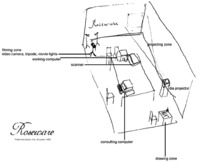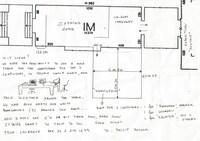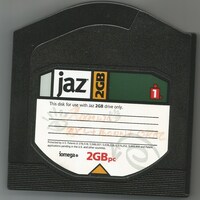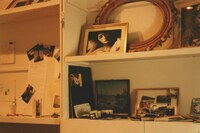Roseware
Collectief gedicht in wording, eindeloze CD-ROM. Een interactieve installatie ontwikkeld door Chris Marker en Constant (Laurence Rassel) tussen 1998 en 1999.
http://constantvzw.org/site/Roseware,2889.html
A collective memory structure
Roseware (an aggregation of the words ‘rosebud’ and ‘freeware’) is first of all a simple, linear and empty structure on a computer at the public’s disposal.
Each visitor, with the help of a mediator, is invited to create a chapter. A chapter is made up of twelves pages and can be filled with images, text, sounds, slides, drawings, video footage which is fed into the computer with the help of a video camera and a scanner. It’s best if the public comes prepared, with all kinds of images, text etc. But there is also a possibility to create a chapter on the spot. The chapters can be viewed separately and are connecteced to other chapters, which enables the public to walk from one chapter to another. A little patience is needed, because creating a chapter can take more than an hour.
Both the structure inside a chapter and the structure between chapters are typical structures for a CD-ROM.
For Roseware, a simplified version of the CD-ROM Immemory was used. In Immemory, Marker distances himself from linearity and searches ways to structure memories into images. He approaches the memory in an almost geographical way, inspired by concepts of Robert Hooke. According to Marker, the memory includes images from different origins and media carriers which exists next to each other in space and time. For Roseware, the Immemory CD-ROM with Marker’s personal memories was emptied, so the participants could create their own Immemory.
Both projects were created with the software Hyperstudio.
Each participant can make their own choice of materials to put on the CD-ROM. The way in which they link the material together, represents the individual way their memory works. At the same time the individual inputs become part of the collective memory structure.
The idea of Roseware is to break the contemplative sphere initiated by museums, even when they show new media or video art.
‘But my fondest wish is that there might be enough familiar codes here (the travel picture, the family album, the totem animal) that the reader-visitor could imperceptibly come to replace my images with his, my memories with his, and that my Immemory should serve as a springboard for his own pilgrimage in Time Regained.’ (Chris Marker, Liner notes from the original English edition of Immemory, 1997)
Roseware was first shown in BOZAR (then Palais des Beaux-Arts) in Brussels in 1998 as part of the second edition of Verbindingen/Jonctions, organised by Constant. The installation continued it’s journey to:
- Bonn, Videonale, September 1998
- Graz, steirischer herbst, October 1998
- Sevilla, El Centro Andaluz de Arte Contemporáno (CAAC), 1999
- Barcelona, Centre de producció d’arts visuals i multimedia, 1999


